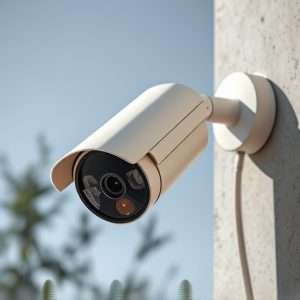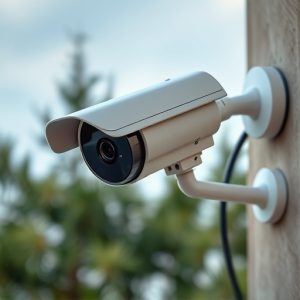Mastering the Art of Installing Realistic Fake Surveillance Equipment
The market for fake surveillance equipment is booming due to increased demand from individuals and b…….
The market for fake surveillance equipment is booming due to increased demand from individuals and businesses seeking security enhancements. Realistic fake cameras can deter intruders, boost security, and create a perception of heightened surveillance. Installing multiple fake cameras requires strategic planning, realistic products, and careful positioning for optimal effect. However, ethical concerns and legal regulations regarding privacy must be considered before deployment. Effective installation techniques include mixing real and fake cameras, varying angles and heights, regular maintenance, and natural placement to maximize realism.
In an era where surveillance is omnipresent, realistic fake security cameras offer a unique solution for both privacy advocates and property owners. This article explores the growing market for lifelike fake surveillance equipment, delving into various types available, from subtle to highly advanced imitations. We provide a step-by-step guide on installing multiple fake cameras while addressing ethical considerations and legal implications. Learn best practices to maintain their realism and effectiveness for deterring potential intruders.
- Understanding the Market for Fake Surveillance Equipment
- Types of Realistic-Looking Fake Security Cameras
- Installing Multiple Fake Cameras: A Step-by-Step Guide
- Ethical Considerations and Legal Implications
- Best Practices for Maintaining Realism and Effectiveness
Understanding the Market for Fake Surveillance Equipment
The market for fake surveillance equipment has seen a surge in demand, driven by both curious individuals and businesses seeking to enhance their security measures. This phenomenon is particularly notable among those who wish to test their actual security systems, install multiple fake cameras to deter potential intruders, or even create a realistic appearance of surveillance for added peace of mind.
Understanding consumer behavior and the evolving nature of security needs is essential for manufacturers and retailers. The market offers a unique opportunity to cater to a diverse range of customers, from homeowners looking to protect their assets to businesses aiming to safeguard sensitive areas. By providing high-quality, realistic fake surveillance equipment, vendors can contribute to a more secure environment while addressing the growing demand for innovative security solutions.
Types of Realistic-Looking Fake Security Cameras
In the realm of security, realistic-looking fake surveillance equipment has emerged as a clever solution for deterring potential intruders while maintaining an air of vigilance. One popular type consists of mimicry cameras designed to resemble real CCTV devices. These faux cameras are meticulously crafted, often featuring detailed replicas of lens structures and housing materials, making them nearly indistinguishable from genuine security cameras. Their strategic placement can significantly enhance home or business security without the need for extensive installation processes.
Installing multiple fake security cameras further bolsters security measures. By dispersing these realistic replicas throughout a property, would-be thieves or intruders are met with an unsettling uncertainty, as they cannot be certain which devices are functional and which are not. This strategic deception creates an effective deterrent, encouraging cautious behavior and potentially deterring criminal activities.
Installing Multiple Fake Cameras: A Step-by-Step Guide
Installing multiple fake security cameras involves a strategic approach to create a convincing surveillance network. Begin by assessing the area you want to monitor, identifying key positions for camera placement. Consider factors like visibility, angle of coverage, and potential blind spots. Purchase a variety of realistic-looking fake cameras, ensuring they match the make, model, and aesthetic of genuine security equipment in your area.
Follow these steps:
1. Plan and Map Out Locations: Sketch out the area and mark potential camera positions, considering line-of-sight visibility and strategic coverage.
2. Mix Real with Fake: Intermix authentic cameras with fake ones to create a natural, unpredictable arrangement. This blends the genuine with the artificial, making it harder for anyone to identify the fakes.
3. Position Cameras Strategically: Mount or place cameras at different heights and angles to capture various perspectives. Overlapping fields of view can enhance coverage, ensuring no blind spots remain.
4. Use Power Sources Wisely: Some fake cameras may be battery-powered; others might require external power. Hide power sources discreetly, utilizing existing electrical outlets or battery chargers to avoid suspicion.
Ethical Considerations and Legal Implications
The installation of multiple fake security cameras raises important ethical considerations and legal implications that cannot be overlooked. While realistic-looking artificial surveillance equipment offers a unique perspective on home or business security, it blurs the line between reality and simulation. One primary concern is the potential for deception; residents or patrons might not realize they are being monitored by fakes, leading to mistrust and privacy issues. This becomes especially sensitive when fake cameras are placed in public spaces or private homes without explicit consent.
Legally, the use of such devices can be murky. Many jurisdictions have specific regulations regarding surveillance equipment, with requirements for transparency and consent. Installing multiple fake cameras could potentially violate these laws, leading to legal repercussions. It is crucial to understand the local legal framework before deploying any form of surveillance technology, whether real or simulated, to ensure compliance and respect for individual privacy rights.
Best Practices for Maintaining Realism and Effectiveness
To achieve maximum realism and effectiveness with fake surveillance equipment, several best practices should be considered. One key strategy is to install multiple fake security cameras throughout the area being monitored. This creates a dense network that mirrors genuine surveillance systems, enhancing the overall believability of the setup. Additionally, placing these cameras at various angles and heights adds depth and complexity, making it harder for potential intruders to identify them as fakes.
Regular maintenance is another crucial aspect. Ensure the equipment appears well-maintained and up-to-date with current technology trends. Dusty or weathered surfaces can give away their artificiality. Regular cleaning and minor adjustments can keep them looking fresh and functional. Additionally, keeping them in strategic locations where they naturally fit into the environment—whether on walls, ceilings, or poles—further increases their realism, contributing to a more convincing security presence.
Realistic fake surveillance equipment can serve as an effective deterrent in various settings, from homes to businesses. By understanding the market, selecting high-quality cameras, and strategically installing multiple units, individuals can enhance their security without breaking the bank. However, it’s crucial to balance the benefits with ethical considerations and legal implications. Following best practices for maintaining realism and effectiveness ensures these measures remain both successful and responsible. For those seeking to boost their security, installing multiple fake security cameras is a step towards creating an environment that’s as safe as it is secure.


